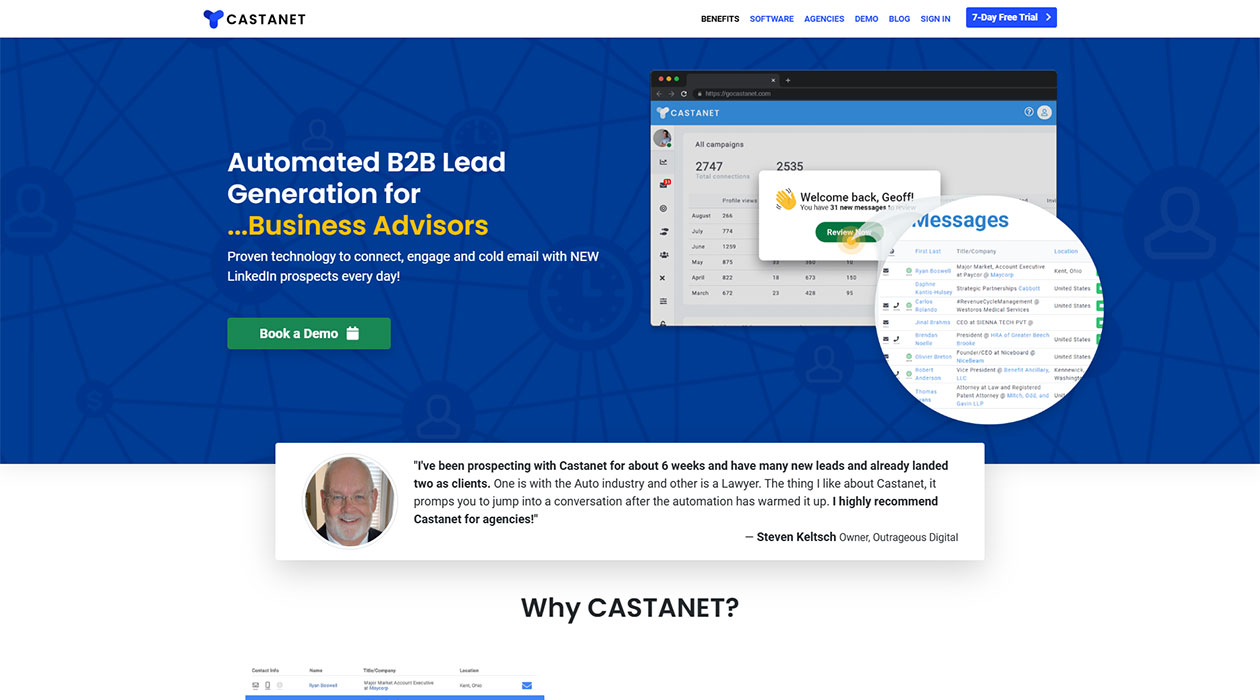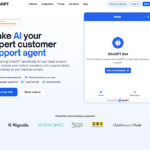Castanet is an automation tool for LinkedIn outreach. Its primary customers are consultants, freelancers, and lead generation agencies.
Founded by Mac Martine in August 2018, the tool reached approximately $61,000 in monthly recurring revenue (MRR) before being sold two and a half years later.
How the company was founded
Martine spent about seven years trying different ideas. He built various SaaS apps, most of which went nowhere. Most of the apps he created aimed to solve personal challenges related to his hobbies.
Eventually, he realized this approach wasn’t working. He decided to take a different path. Martine began reaching out to business owners and executives he knew. He set up coffee meetings with local contacts to gain insights. They were generally eager to help.
After each meeting, Martine wrote down notes and looked for common themes. He also asked his contacts for introductions to others they thought he should meet. Through these meetings, he identified lead generation as a promising area. He brainstormed several ideas in this space.
In one meeting, he sold a batch of 10,000 leads for $4,500. A sales manager at a large software company mentioned specific criteria for potential leads. Martine offered to find them. He went home and wrote a script to automate this process.
The script used the Google Search API to find a specific type of business. It checked the business domains to see if they used Google Workspace. Then they gathered generic email addresses like ‘info@’, ‘help@’, and ‘support@’ using various APIs. Although there was more to it, the core idea was meeting criteria existing tools couldn’t easily match.
This experience showed Martine the value of quality leads to sales teams. It inspired the creation of Castanet. At many coffee meetings, people expressed willingness to pay for a solution like Castanet. This boosted Martine’s confidence to start building it.
It took him about four weeks to develop Castanet.
How he acquired the first few customers
After about four weeks of building, Martine decided to soft launch. He reached out to some of the people he had been conversing with. Some of them bought it within the first few days!
He also started using the tool itself to generate more leads on LinkedIn. He conducted countless demos over Zoom. Most of his customers were generated through the tool itself.
Initially, Martine handled everything. He created outreach campaigns and conducted demos almost daily, often multiple times a day.
About six months in, a customer approached him with a proposal. They wanted to white-label the product to serve as a reseller. This meant selling the tool under their own brand in exchange for a commission.
Initially, he declined the offer. But as time went on, he felt stretched thin between sales, demos, and product development. He realized that having resellers could be highly beneficial.
So he built a white-label version and welcomed his first reseller. Over time, several others expressed interest in becoming resellers. Eventually, he ended up with four resellers.
How he sold the company
Martine decided to sell the business in February 2021. He did it through a broker that others he knew had used. He contacted only one broker. He liked the numbers they discussed on the first call, so he decided to go with them.
Currently, he is growing two SaaS apps – Aware and ViralBox.
Aware is a LinkedIn engagement & analytics tool for creators. ViralBox helps SaaS teams turn their customers into viral marketers.


